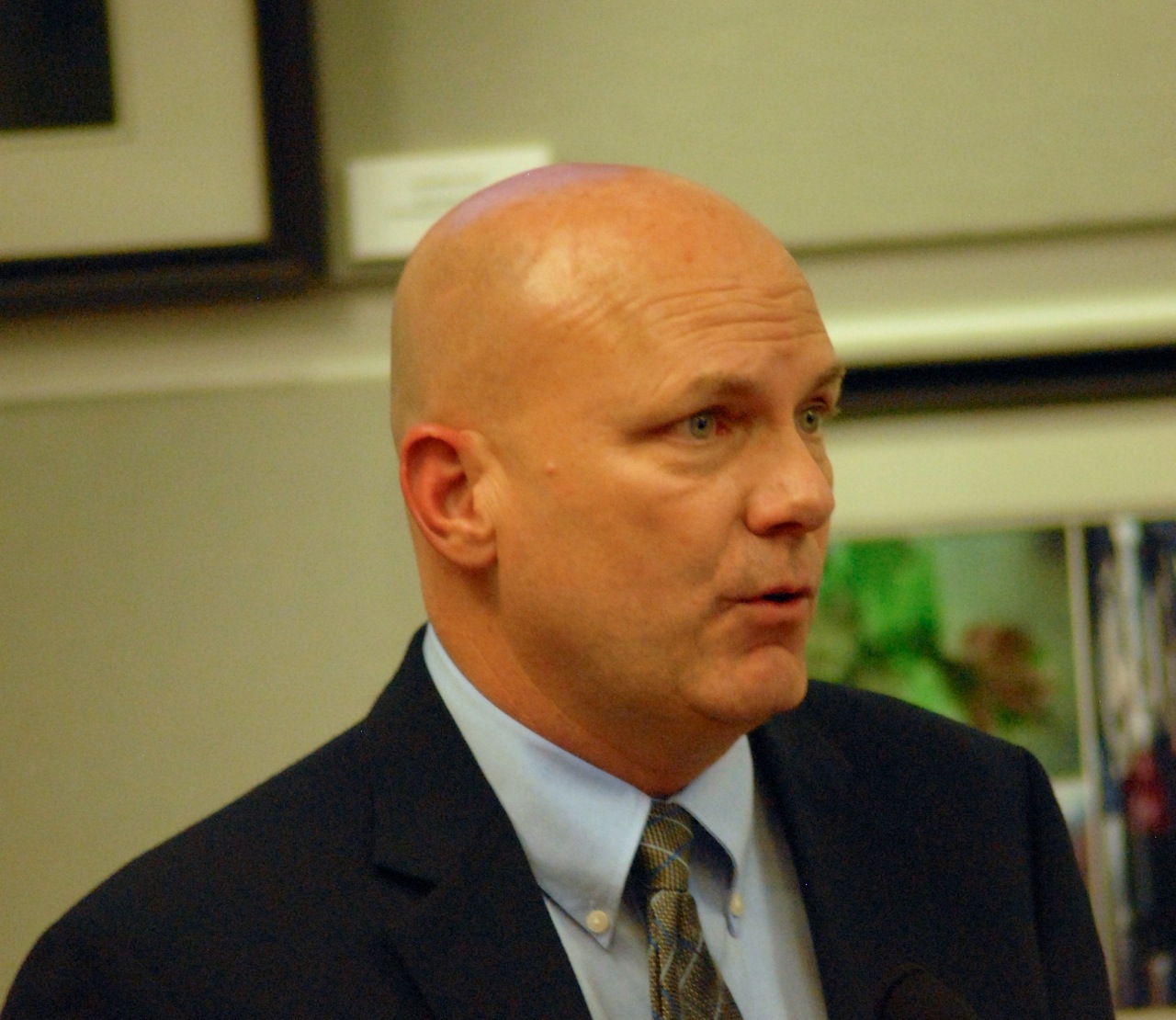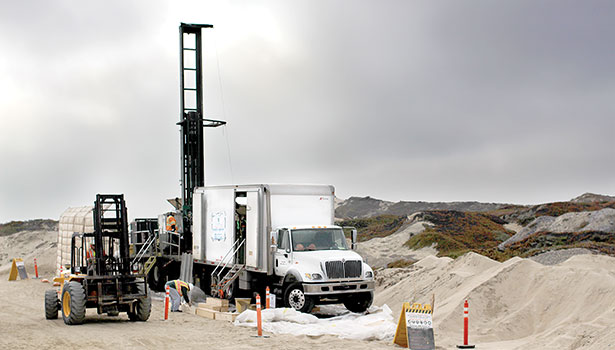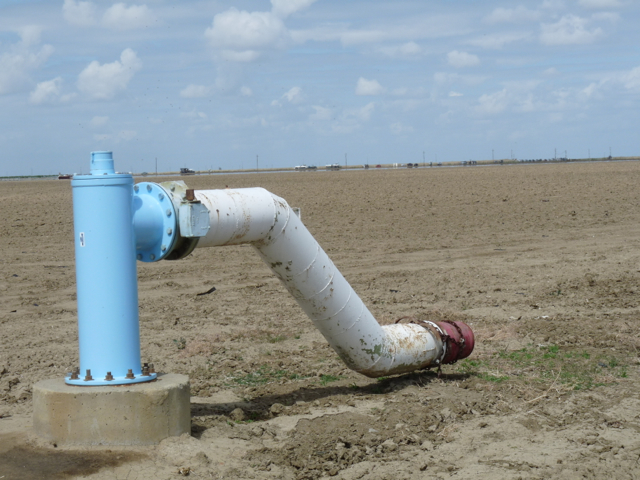Top Ten Issues Facing Ag
The Top Ten Issues Facing Agriculture:
California Fresh Fruit Association’s Bedwell Lays Them Out
By Patrick Cavanaugh, California Ag Today
For the first time in nearly eight decades, the California Fresh Fruit Association met in San Diego to carry on all the traditions established over the previous 79 years by the organization originally known as the California Grape & Tree Fruit League.
“How does that feel?” said President Barry Bedwell as he addressed a big part of his membership. “For the most part, I think the feedback has been more than positive. As we explain the rationale behind the name change and why we have moved from a very dear moniker, if you will, for an association that has such a great history, I think it is altogether fitting and proper to recognize our position in the state of California,” said Bedwell.
The Association covers the state from Lake County in the North to the Coachella Valley in the South, and represents 13 commodities with a combined value of $2.5 billion.
“The new name transition has gone very well,” noted Bedwell. “And as we look at 2015, I think it is a ‘schizophrenic’ time for agriculture. On the one hand, as our chairman, David Jackson, pointed out, economically, things look very strong for most commodities.”
“However, here we are in a situation of increasing anxiety. If you look at the feedback every year on our top ten issues, you can see the concentration of issues that are not simply operational in scope. They may be historic in impact when talking about water availability and groundwater management, as we move forward,” said Bedwell. “The availability of water, along with the availability of labor, are simply game changers. They can change things overnight. And I think, inherently, farmers understand that and all of you in this room working together as a supply chain understand that.”
Bedwell then announced his traditional Top Ten Issues Affecting Ag and the association and discussed how they changed from the prior year:
#10 Workers’ Compensation costs. We bought up our partnership with Zenith Insurance. It’s about how to run programs more efficiently to save you money, but we understand that when it comes to the issue of worker’s comp, it is the issue of the legislature changing the laws to benefit certain classes of participants that leads to higher costs that render our competitiveness more difficult.
#9 Invasive Pest Issues. Look no further than what’s happening with the citrus industry and their struggle agains HLB and the idea of the Citrus psyllid continually being found in new counties throughout the state. Pests for us on one hand are more associated with things like the European Grapevine Moth, where we have done a good job, made progress, and have a chance at eradication, but pests are always on our minds because we are only one quarantine away from not being able to ship our fruit, and we understand that.
#8 Water Quality. We hear so much about water availability, but creeping up into our mindset as well, is water quality because we know we have issues with salts and nitrates in the Valley. How does agriculture get involved with this? It continues to be an issue.
#7 Groundwater Management Legislation. We saw on our list—for the first—groundwater management legislation. This is potentially a game changer. We just had a meeting with some of you in Visalia with the California Water Foundation. They are trying to explain the timeframe for this new law, and quite frankly, the more you learn about it, the more you have to be concerned about any potential outcome other than the scope of agriculture in the state of California.
Because what they are saying in an almost commonsense contradiction is that this has nothing to do with your water rights. Those don’t change, but we may limit the amount of water you can use. That is a tough one to figure out at times, but that is potentially where we are headed in the fourth year of the drought. As you hear the vernacular in Sacramento, the mindset begins to change from one of, ‘Maybe we’ll get rain this year,’ to ‘Maybe we are in the fourth year of a ten-year drought.’ So all of the sudden, the mindset begins to change to more management of water. This is a major concern.
#6 Labor Costs. Knowing and trying to educate legislators about the fact that seventy to perhaps eighty percent of our variable costs as farmers is tied up with labor because we deal with the most labor-intense costs possible with our 13 commodities. I don’t look at any as being machine harvested or machine pruned. So, every time there’s a good-will gesture of, ‘Boy, we should move that minimum wage up,’ we try to explain to people we don’t pay minimum wage. Wages are higher; but incrementally, all of our sectors move up, whether you are a tractor driver or an irrigator, and that has a major impact on our ability to compete on a world-wide basis. And you start to see the labor influence spilling into Baja, California.
As you read recently, workers there are demonstrating because they are making about $8/day, and we are probably more about $12/hour for seasonal labor. But we still have to compete with those instances, so labor is always going to be a concern. We always talk about labor laws and regulations.
#5 Agriculture Labor Relations Act. A year ago at this time, we talked about a case involving one of our members, Gerawan, and the United Farm Workers (UFW), who won an election back in 1990, disappeared for 22 years, then showed up again last summer. The UFW said, “We are the certified representatives for the employees, we’re now here, we want our contract.” The catch was that the employees said: “We don’t know anything about you; we don’t know why we should pay you three percent of our wages for dues.”
That situation resulted in a hearing beginning on September 29th. At that time, the hearing was in front of an administrative law judge in Fresno, and was scheduled to go for ten weeks. Those ten weeks finished up about two weeks ago—after 23 weeks had past. That’s incredible, to think, we have heard it cost as high as 7 million dollars to have that administrative hearing, all paid by California taxpayers.
This is not really how the law was intended to benefit the workers. So, as we move forward, we are always going to see efforts by organized labor to change the law to change the scale for their benefit. We saw it last year with SB 25, which really tried to create a perpetual mandatory mediation situation.
We have to continually push back on these bills. The most effective way to do that is to communicate the voices of those impacted, and in this case it is the employees. And so we have tried very hard to create a relationship with the members on the Agricultural Labor Relations Board, and a couple of weeks ago when we were in Sacramento, we had dinner with two of the three board members. And I know the chairman spent most of the time speaking with Harold McClarty, president of HMC Farms, so I know we are in good shape. It is really about relationships and that is what we continue to work on.
#4 Healthcare Mandates. What is happening with the Affordable Care Act, and how is impacting you?
We saw some very practical instances last year where many of our members who use farm-labor contractors were approached. And the labor contractors said, “Well, because of the Affordable Care Act, I’m going to have to raise my rates from $0.70 to $1.10/hour. But under closer examination, we said: “Well—hold it. What percent of your workforce really has to be covered under the Act?” In many cases we found that it certainly wasn’t 100 percent; it was sometimes closer to 10 percent. So we are trying to help administer the understanding of that Act for the best benefit of our members.
#3 The Continuing Need for Immigration Reform. It hasn’t gone away. I am so pleased to have Tom Stenzel, president of the United Fresh Produce Association, here with us today, along with his Board chairman Ron Carkoski, because we work very closely on these national issues with Tom and Ron. And our voice is still there. Our level of frustration has grown because as we entered this legislative session in Congress, guess what? What did we hear most about? E-Verify; the Legal Workforce Act; and the concern that we have documented workers. We don’t disagree with that. We think that’s a great idea, but you don’t put the cart in front of the horse; you don’t do E-Verify before you create a system for a legal workforce. That’s a very simple message we are trying to get to the leaders in Congress, and Tom and Ron do an absolutely fantastic job in helping to get that message across.
#2 Food Safety. Last July, I received a phone call from one of our members on a Saturday. It was hard to gauge the impact at the time, because that member said, “I want to let you know that we had four peaches show up in Australia, and there was an indication of Listeria.” Now in Australia, there is technically a tolerance for Listeria, and these were such low levels of Listeria, that that shipment was released.
It went on its way with no issues. But under further examination, Listeria was discovered in the plant. As the U.S. and FDA have no tolerance for Listeria and as U.S. law requires, there was a recall. This was not a small recall. It was a period from June 1st to, I think, July 17th. That is a huge amount of product.
During that time, there were no confirmed illnesses. That doesn’t mean there weren’t claims, because once you start a recall and information goes out to the public, there will be plenty of claims. But from an association point-of-view, how do we react and plan for the future with regard to food safety? Because all of the sudden, the perception of tree fruit in this instance, and peaches and nectarines, in particular, being a low-risk commodity, has changed.
Is it really a low-risk commodity? Absolutely, it is a low-risk commodity. But are we immune? Absolutely not. We found out that we have food safety issues, like so many other fresh produce commodities. We had to communicate the right way not only to the segment of our members who were involved. Many of them were, quite frankly, in a state of denial, saying, “This shouldn’t be happening.” Well it happened.
But I want to applaud the industry, and especially our leadership Association, who said, “We have to do the right thing. We have to communicate our concern. We have to be positive about this.” They not only moved forward with our membership aspect, but they also created the partnership with the Center for Produce Safety in Davis to develop the best possible practices as we move ahead.
Food safety was further complicated late in the year because of the apple recall. Now those were candied apples, they had caramel on them. But as you can see, the fact is the Listeria found was attributable to the apples, not the coating. Again, we had an industry that thought, quite rightfully, they were low-risk. And once again, we are learning we are not immune. As we move ahead, food safety is going to be a very important component of our work as an Association.
We have created a food safety sub-committee, chaired by George Nicolate.
#1 Can anybody guess? Water. From our perspective, there are three general areas of water we have to focus on. Number one, the Water Bond, and what happened last summer. It is a very good success story, in that we were able, with the help of individuals in the legislature, to maximize the amount of dollars in that bond for above-ground storage. But in Sacramento today, there are challenges and perceptions regarding dams. People have mindsets that unfortunately go to the extreme and in many case, dams is one of those.
I can guarantee that through the efforts of people who were involved in our Association and through the Agricultural President’s Council, we were able to move up what was first a $2 billion proposal, then $2.5, then $2.7, with a commitment for a subsequent legislation on Cross-Valley conveyance in Kern County.
This was a major accomplishment, but as accomplishments go, unless you follow-through, you’re never going to realize the results. And I think George Soares, attorney with Kahn, Soares, and Conway in Sacramento, said it best when he said, “As these things happen, amnesia sets in with people very quickly. And all the sudden the people with whom you were discussing above-ground storage with will start to say, ‘Well, you know the bond says it doesn’t have to be above-ground storage; maybe we could do local projects, regional projects, or maybe we can do underground banking.’”
Our message has been very clear, “No, the deal that was made was on two above-ground storage units, and the fact is that these will be decided by water commissioners. There are public benefit formulas, and those projects should be at the top. And until they are disqualified, they should be the first two that are qualified.”
As we were up in Sacramento a couple weeks ago, I think there was frustration among our participants as we heard the governor’s point person on water start to demonstrate that amnesia right in front of us. And that was a concern.
Number one, we have to push the true intent of the water bond to the finish line.
Number two, we have to have input into the groundwater management regulations a process that will require regulations sustainable management agencies for local water agencies. This is a very complicated issue. It’s very difficult to talk about what sustainability is. When they set baselines to talk about the ability to use groundwater, it is vital that we have the opportunity to give our input to stress the importance of sustainability and to emphasize that human health also involves vibrant farms and the employment of individuals. We have to have those concepts melded together.
Lastly we have the long-term issues of water conveyance in the state. If we are going to remain the agricultural giant that we are with the, I believe, all time record in 2014, we are going to have to find a more efficient way to move water, whether is that is the governor’s BDC plan, which doesn’t appear to be gaining traction, or not. But longer-term, members have said, “We are not against moving excess water South. We have to make sure the health of the Delta is maintained. We have to respect environmental laws, but we have to respect the impact of agriculture on our quality of life. So, water is at the forefront.
So, how’s the association doing? Very well. Financially we are on strong terms, I feel very good about our name change and our voluntary leadership moving ahead. I think we can take confidence in looking ahead at the future for this Association.
In summary, I just want to reiterate my thanks for being able to work for production agriculture. It is frustrating at times. It’s always difficult. Working with people who sometimes don’t understand, … it reminds me of the saying that I read in the paper yesterday and need to share with you. It is by Mark Twain, who said, “You never want to get into an argument with a stupid person, they will simply drag you down to their level, and then beat you with experience.”
Many times, in the world of public policy, that’s what we’re are dealing with at times. But we tend to look at it as an opportunity to educate as well as advocate. Those are two separate things, you have to be good at both of them, and I think our leadership does a very good job with them.
Bedwell gave special thanks to this year’s Chairman David Jackson and his wife Gale. He also reached out to thank his staff for the great job they are doing back at the office and in the field.
For more information, go to: California Fresh Fruit Association.
















